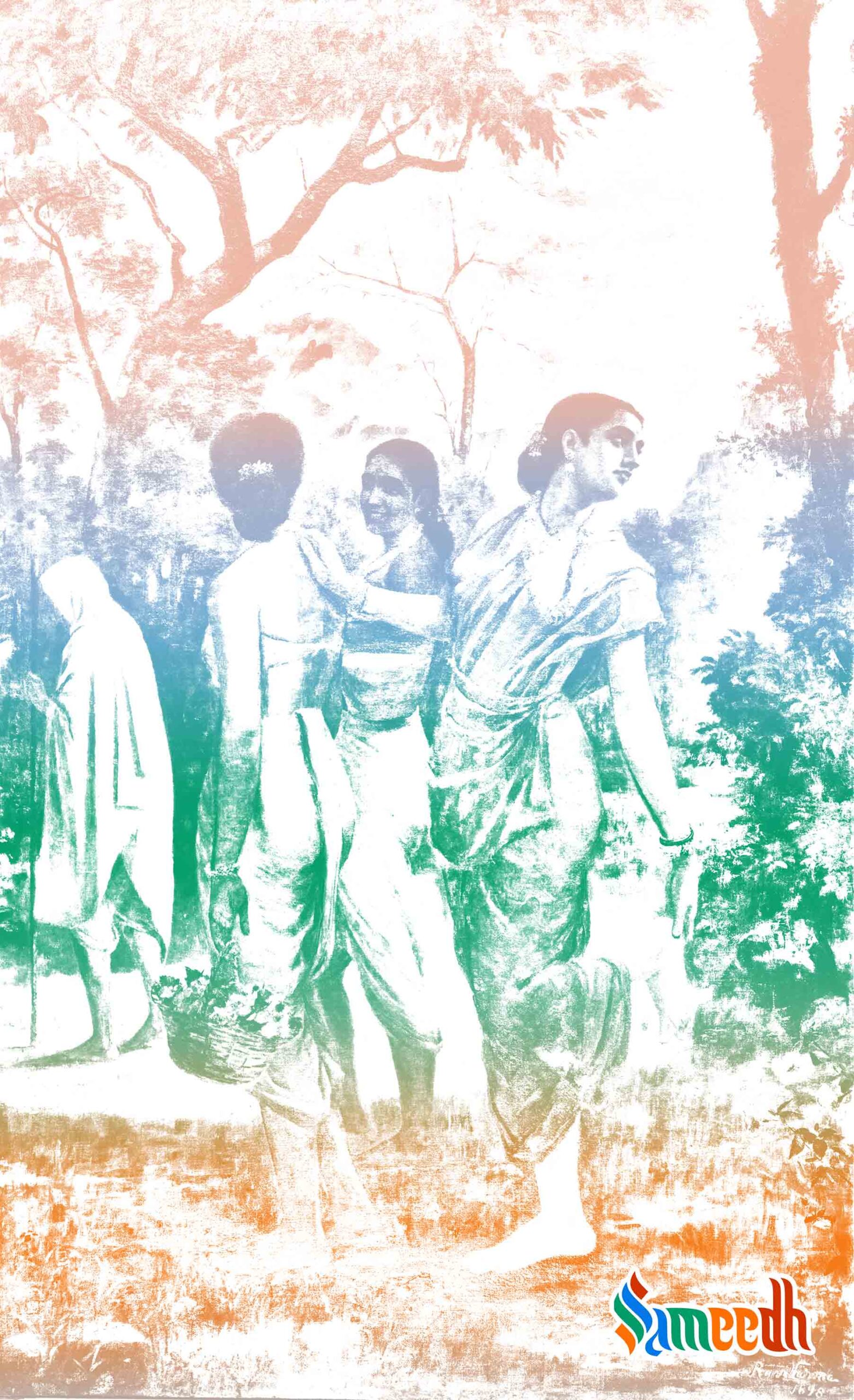Shakuntal is one of the finest pieces of art created by Poet Kalidas. It depicts the story of Shakuntala and her relationship with king Dushyant. India is also known by the name of her son – Bharat.

Shakuntala looks back at her lover, pretending to remove a thorn from her foot; Image Source: Raja Ravi Varma
ETYMOLOGY
Shakuntal is the name of a theatre play which was created by one of the most revered poets and authors of India – Kalidas. Its full name is Abhijnan Shakuntalam which means ‘the recognition of Shakuntala’. The story of this theatre play is about a girl called ‘Shakuntala’ and her relationship with King Dushyant. Legends say that Shakuntala was found by her adoptive father – Kanva Rishi in forests where a group of Shakunt birds (a kind of vulture) were protecting her. That’s why Kanva Rishi gave her the name Shakuntala which means ‘protected by Shakunt’.
DATING AND HISTORICAL CONTEXT
It is believed that Kalidas created this masterpiece around 1st century BC to 5th century CE. Kavi Kalidas was the Royal Poet in the court of King Vikramaditya during 4th & 5th century AD. Some legends also say that Kalidas was the Royal Poet in the court of King Agnimitra Sung during 2nd & 1st century BC.
The story of Abhijnan Shakuntalam has references to many popular scriptures such as Mahabharat and Padma Puran. Those were the teachings of Ved that opened up the path of literary evolution, and numerous other scholars – such as Panini, then developed the grammar and methods of interpretation. Abhijnan Shakuntalam is undoubtedly one of the finest examples of Natya Shastra.
CONTENT
Abhijnan Shakuntalam was written in Sanskrit by Kalidas, and today it has been translated into so many languages within India and also around the world. Abhijnan Shakuntalam has been divided into 7 Acts (Ank). The story progresses throughout these seven acts to ultimately reach the conclusion. Each part has about 30-40 verses or Shlok.
There are numerous characters in the play – including King Dushyant, Kanva Rishi, Madhavya, Sharangarav, Sharadvata, Shakuntala, Anasuya, Priyamvada, Vasumati, Sanumati, etc. The story revolves around the main character Shakuntala – starting from her early life to the birth of King Bharat; and their ultimate union with King Dushyant.
LEARNINGS
Abhijnan Shakuntalam touches upon numerous teachings from the Hindu as well as Buddhist faiths. They also put some light on the lifestyle and geography of the Malda Region in India, especially the Ujjain city. It also highlights the importance of observing our duties (Dharm) and not falling for distractions.
CULTURAL INFLUENCE
The theatre play Abhijnan Shakuntalam is considered to be one of the finest examples of drama. It is said that ‘Among all kinds of literature, drama is most beautiful; and among the dramas, Shakuntal is enchanting.’ Abhijnan Shakuntalam has become the benchmark of literary prowess. It has been the inspiration behind numerous other stories. It also successfully carried forward the Indian ethos and social traditions. One of the most important influences on the people is about ‘morality’. The storyline of Abhijnan Shakuntalam makes people aware of moral conundrums and the ideal solutions.
The story of Abhijnan Shakuntalam transports you to a magical world beyond time! It catches your attention from the very beginning and draws many comparisons with our day-to-day lives. If you love ‘Drama’, then you shouldn’t miss this masterpiece. And if you want to do that later, here is amazing information about the birth of Shakuntala.
